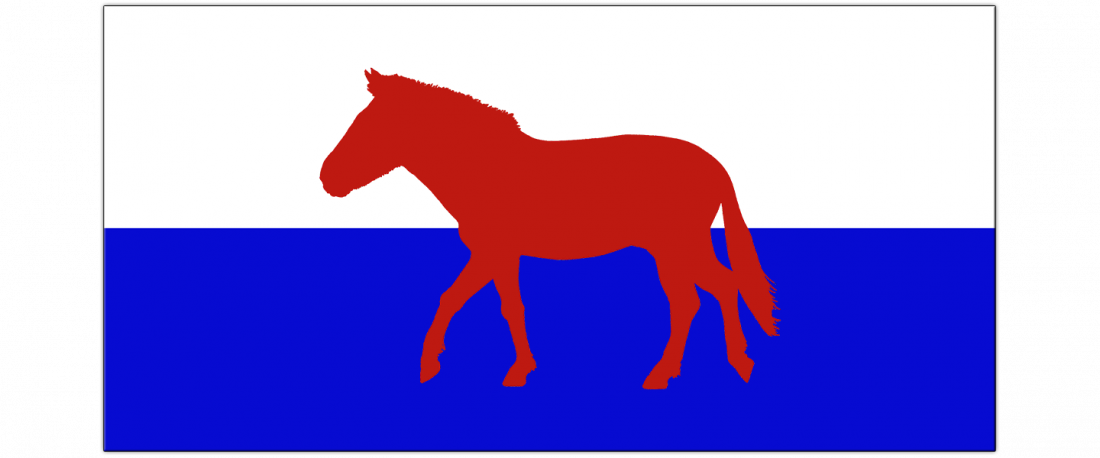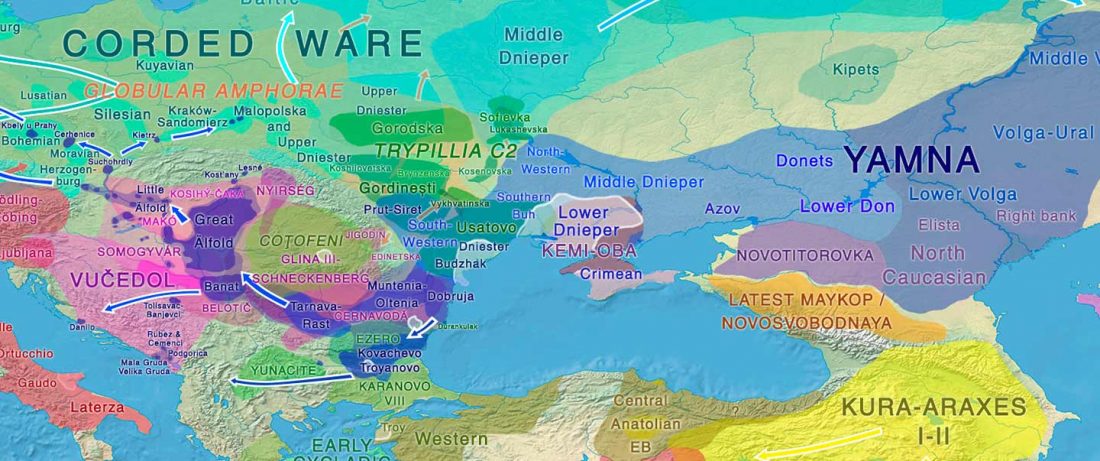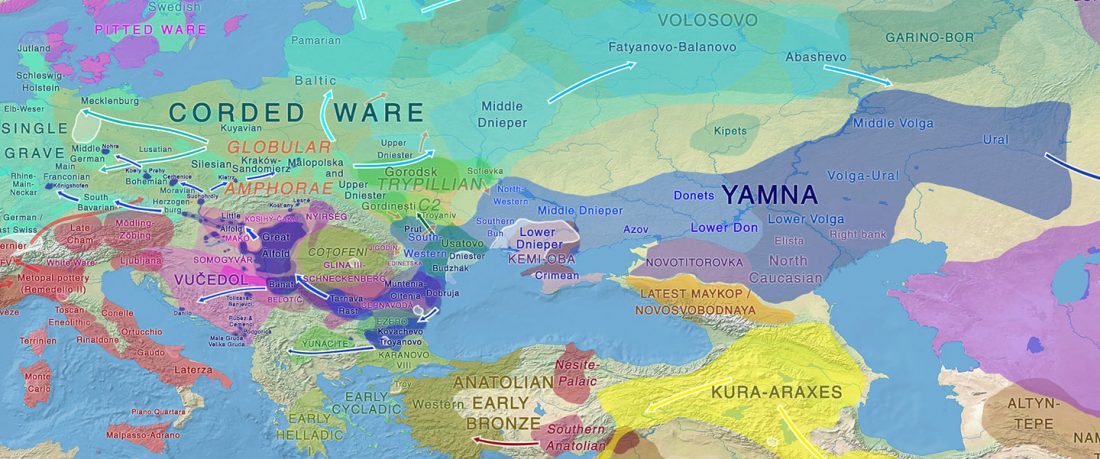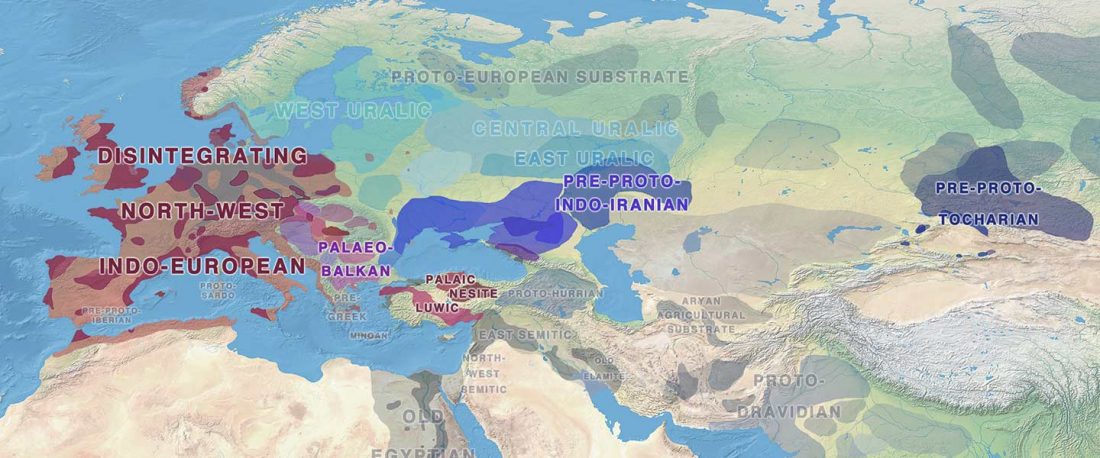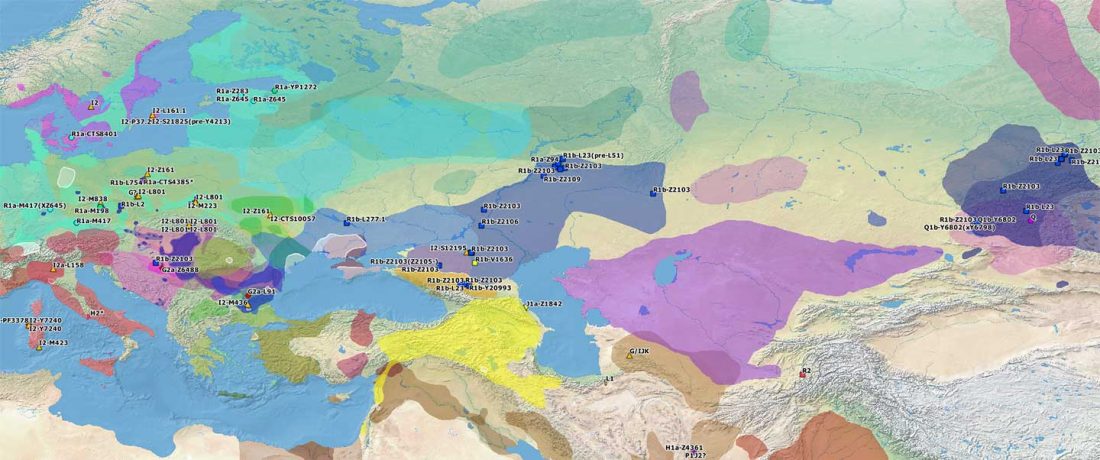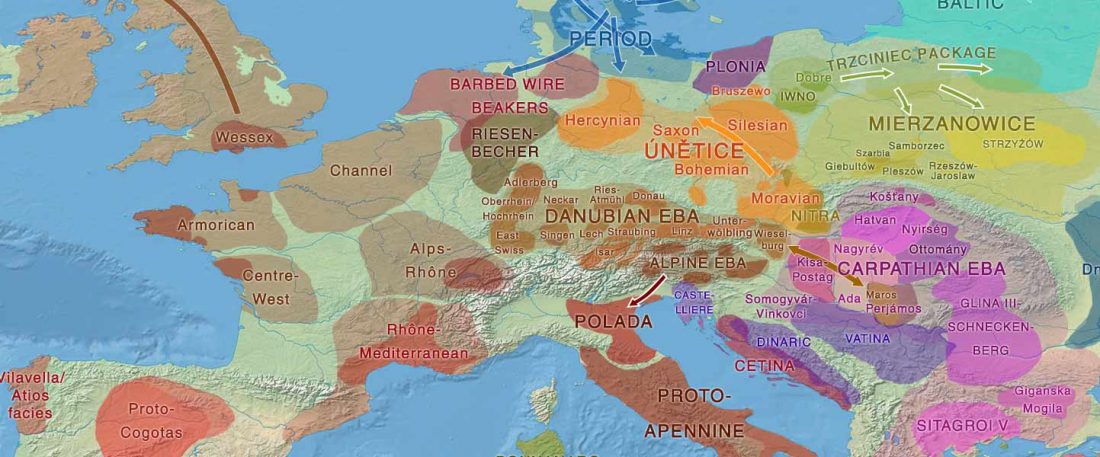The waves of disinformation are already here, putting the blame again on the European Union, as in the Financial Crisis of 2008. After years of negligent state policies promoted or tolerated by ruling political parties and social majorities of each country in the EU, which have led directly to yet another avoidable crisis. After years of state inactivity in the supranational political arena, hindering European social integration, and stripping EU institutions of any real power. The culprits are, again, not we, but they: evil and foreign hands pulling invisible strings from Brussels. The Age of Populism at its … Read the rest “Winds of change and our shared European past”
Tag: corded ware
Fully Steppe-like Proto-Corded Ware Late Trypillians
The genotypes from Human auditory ossicles as an alternative optimal source of ancient DNA, by Sirak et al. Genome Res. (2020), have been finally published by the Reich Lab, so we can get a sneak peek into what’s coming in future papers about the origins of R1a-rich Proto-Corded Ware and R1b-rich Italo-Venetic peoples.
NOTE. To avoid adding potential errors, I have merged the Reich Lab’s Curated Dataset (v. 42.4, March 1 2020) with these new samples before performing the qpAdm analyses. If you find something different with your files, you should probably check out this simple setting first. … Read the rest “Fully Steppe-like Proto-Corded Ware Late Trypillians”
Earliest R1a-Z93…from Late Trypillia in the Podolian-Volhynian Upland!
Recently, the preprint by Sirak et al. biorXiv (2019), Human auditory ossicles as an alternative optimal source of ancient DNA, was published in Genome Res. (2020), and the corresponding samples were finally uploaded to ENA.
I have been trying to get my hands on sample GLAV_14, a male from the Late Eneolithic site Glăvăneştii Vechi, classified as Romania Bronze Age (ca. 3500-3000 BC), mtDNA T1a1, referenced as investigated first in the study:
… Read the rest “Earliest R1a-Z93…from Late Trypillia in the Podolian-Volhynian Upland!”Haas N, Maximilian K. 1958. Anthropological study of the human bones from graves with ochre from Glăvăneștii Vechi, Corlăteni and Stoicani Cetățuie. Soviet Anthropology 4,
Ancient phylogeography: spread of haplogroups R1b, R1a and N
The previous post showed the potential use of TreeToM to visualize ancient DNA samples in maps together with their Y-DNA phylogenetic trees. I have written Newick trees for Y-chromosome haplogroups R1b-L388 (encompassing R-V1636 and R-P297, which in turn split into R-M73 and R-M269), R1a, and N.
I have reviewed some of the BAM files from my previous bulk analyses with YLeaf v.2, to add information that I had not previously included in the All Ancient DNA Dataset, and which might be relevant to the proper depiction of phylogenetic trees; in particular, positive and negative SNPs potentially distinguishing archaic… Read the rest “Ancient phylogeography: spread of haplogroups R1b, R1a and N”
Early Uralic – Indo-European contacts within Europe
One of the most interesting aspects for future linguistic research, boosted by the current knowledge in population genomics, is the influence of Uralic – most likely spread initially with Corded Ware peoples across northern Europe – on early Indo-European dialects.
Whereas studies on the potential Afroasiatic (or Semitic), Vasconic, Etruscan, or non-Indo-European in general abound for ancient and southern IE branches (see e.g. more on the NWIE substrate words), almost exclusively Uralicists have dealt with the long-term mutual influences between Indo-European and Uralic dialects, and often mostly from the Uralic side.… Read the rest “Early Uralic – Indo-European contacts within Europe”
The expansion of Indo-Europeans in Y-chromosome haplogroups
I have compiled for two years now the reported Y-DNA and mtDNA haplogroups of ancient DNA samples published, including also SNPs from analysis of the BAM files by hobbyists.
Y-DNA timeline
Here is a video with a timeline of the evolution of Indo-European speakers, according to what is known today about reconstructed languages, prehistoric cultures and ancient DNA:
NOTE. The video is best viewed in HD 1080p (1920×1080) with a display that allows for this or greater video quality, and a screen big enough to see haplogroup symbols, i.e. tablet or greater. The YouTube link is here. The … Read the rest “The expansion of Indo-Europeans in Y-chromosome haplogroups”
“Steppe ancestry” step by step (2019): Mesolithic to Early Bronze Age Eurasia
The recent update on the Indo-Anatolian homeland in the Middle Volga region and its evolution as the Indo-Tocharian homeland in the Don–Volga area as described in Anthony (2019) has, at last, a strong scientific foundation, as it relies on previous linguistic and archaeological theories, now coupled with ancient phylogeography and genomic ancestry.
There are still some inconsistencies in the interpretation of the so-called “Steppe ancestry”, though, despite the one and a half years that have passed since we first had access to the closest Pontic–Caspian steppe source populations. Even my post “Steppe ancestry” step by step from a year ago … Read the rest ““Steppe ancestry” step by step (2019): Mesolithic to Early Bronze Age Eurasia”
Corded Ware and Bell Beaker related groups defined by patrilocality and female exogamy
Two new interesting papers concerning Corded Ware and Bell Beaker peoples appeared last week, supporting yet again what is already well-known since 2015 about West Uralic and North-West Indo-European speakers and their expansion.
Below are relevant excerpts (emphasis mine) and comments.
#UPDATE (27 OCT 2019): I have updated Y-DNA and mtDNA maps of Corded Ware, Bell Beaker, EBA, MBA, and LBA migrations. I have also updated PCA plots, which now include the newly reported samples and those from the Tollense valley, and I have tried some qpAdm models (see below).
I. Corded Ware and
… Read the rest “Corded Ware and Bell Beaker related groups defined by patrilocality and female exogamy”Bell Beakers and Mycenaeans from Yamnaya; Corded Ware from the forest steppe
I have recently written about the spread of Pre-Yamnaya or Yamnaya ancestry and Corded Ware-related ancestry throughout Eurasia, using exclusively analyses published by professional geneticists, and filling in the gaps and contradictory data with the most reasonable interpretations. I did so consciously, to avoid any suspicion that I was interspersing my own data or cherry picking results.
Now I’m finished recapitulating the known public data, and the only way forward is the assessment of these populations using the available datasets and free tools.
Understanding the complexities of qpAdm is fairly difficult without a proper genetic and statistical background, which I … Read the rest “Bell Beakers and Mycenaeans from Yamnaya; Corded Ware from the forest steppe”
